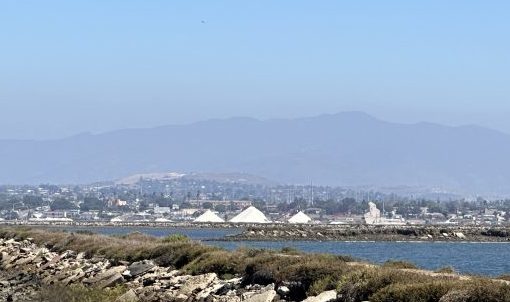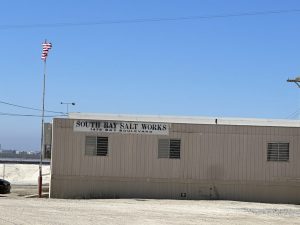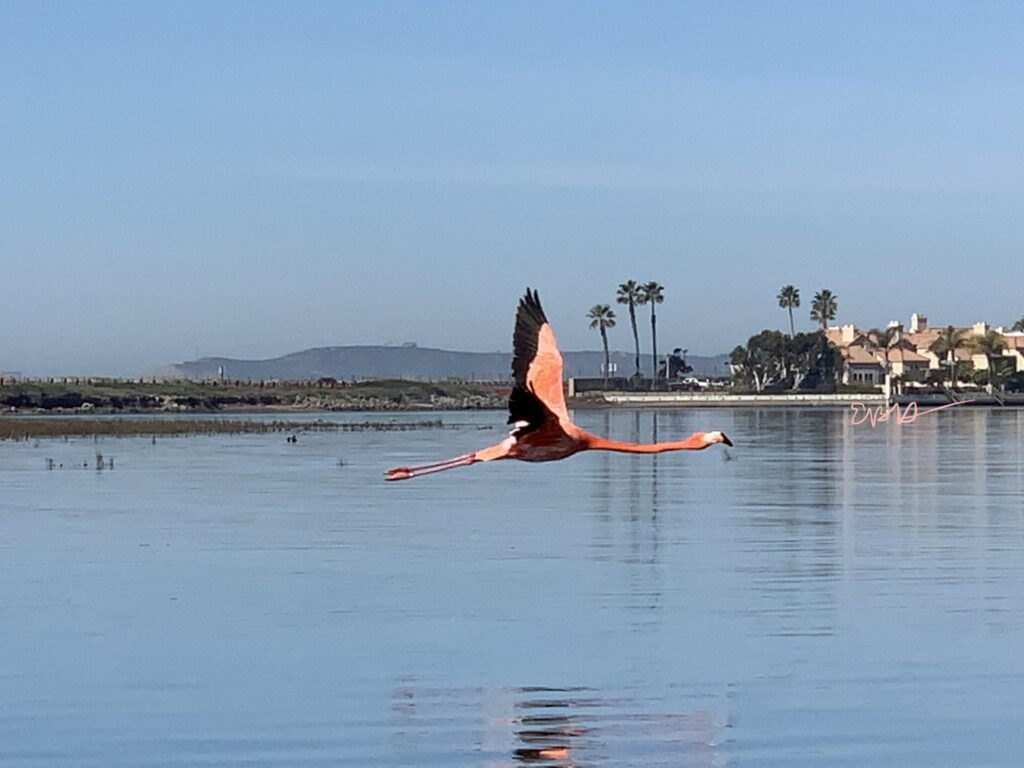
South Bay has a thriving ecological preserve that provides nesting grounds for thousands of birds including the Elegant and Royal Terns. As you drive or bike on the south end of Silver Strand and look east across the South Bay you may notice pyramids of white dunes along the shoreline. These dunes are made of salt that has been harvested from the bay through solar evaporation, a process that takes about a year depending on weather and rainfall. South Bay Salt Works is the private business that harvests the salt, operating under a Special Use Permit within San Diego Bay National Wildlife Refuge.

According to Jill Terp, Deputy Project Leader of the San Diego National Wildlife Refuge Complex for the Fish and Wildlife Service, “Salt collection began thousands of years ago by the Kumeyaay in this and other areas of San Diego Bay, and there has been active commercial salt harvesting here since about 1871. The U.S. Fish and Wildlife Service and South Bay Salt Works work together to protect the thousands of seabirds and shorebirds that nest on the pond dikes every spring and summer, and where birds rest and feed during migration every fall and winter. Since the area is closed to the public due to the salt works operations, these birds have a haven from human disturbance, and an opportunity to produce their next generations and rest along their migration route.”

South Bay Salt Works Vice President Tracy Strahl shared the interesting history of the salt industry in San Diego. In the early 1870s, the initial salt operation on the San Diego Bay was established under the name La Punte Sal. The operation was purchased and expanded in 1902 and became Western Salt Company. HG Fenton acquired Western Salt Company in the 1920s and then in 1999 he sold the company to part of his management team and the land underlying the Salt Works to the State of California, with the San Diego Port Authority the lead agency.

The land was to establish a refuge, to create habitat and mitigation. The U.S. Fish & Wildlife leased the property from the State as part of the purchase, to establish and manage the South San Diego Bay National Wildlife Refuge.
 According to Strahl, “The management team for Western Salt Company created South Bay Salt Works to maintain the habitat that the saltworks created that attracted so many nesting birds and to make salt. While not a ‘natural habitat’, the bird species that come to the Salt Works throughout the year, have been displaced from their natural habitats which are now mostly occupied by humans.”
According to Strahl, “The management team for Western Salt Company created South Bay Salt Works to maintain the habitat that the saltworks created that attracted so many nesting birds and to make salt. While not a ‘natural habitat’, the bird species that come to the Salt Works throughout the year, have been displaced from their natural habitats which are now mostly occupied by humans.”
“We exist today because of the value we provide to the refuge; and the business, the second oldest in San Diego, continues to extract industrial grade salt through solar evaporation of seawater to sell on the market.”

Aside from a nesting ground for Terns, Coronado residents enjoy watching the two flamingos that have taken up residence in the South Bay. When asked if the flamingos were attracted to the area because of the environment provided by the refuge and the Salt Works operations, Terp said, “They are probably attracted to whatever shallow waters are available for them to feed in, and they have been seen foraging inside both the salt ponds and in the bay.”
For those interested in this and other restoration projects, Terp provided additional information saying, “We also have a habitat restoration project underway to restore approximately 125 acres of coastal wetland and upland habitats within the San Diego Bay National Wildlife Refuge for the benefit of native fish, migratory birds, and other coastal dependent species. The Otay River Estuary Restoration Project will occur at two locations within the Refuge: on approximately 34 acres located east of 13th Street near Imperial Beach within the Otay River Floodplain; and approximately 91 acres of an existing salt pond (Pond 15) generally located to the west of the intersection of Bay Boulevard and Palomar Street in Chula Vista. You can find out more information about this restoration project here.




